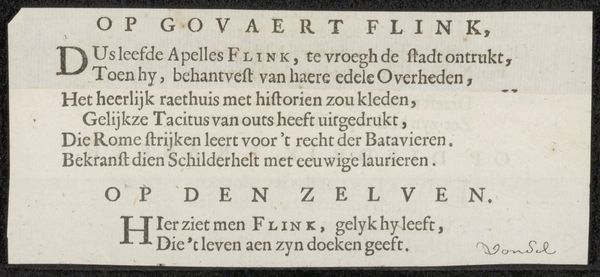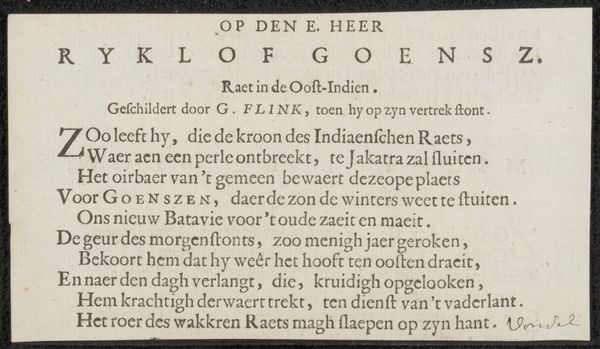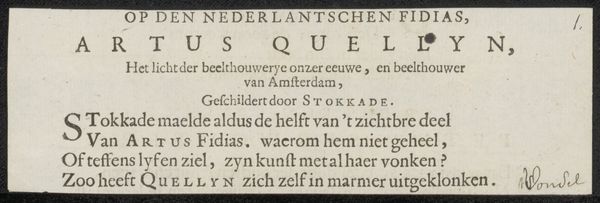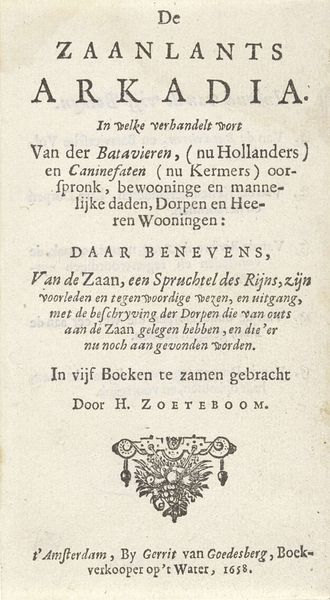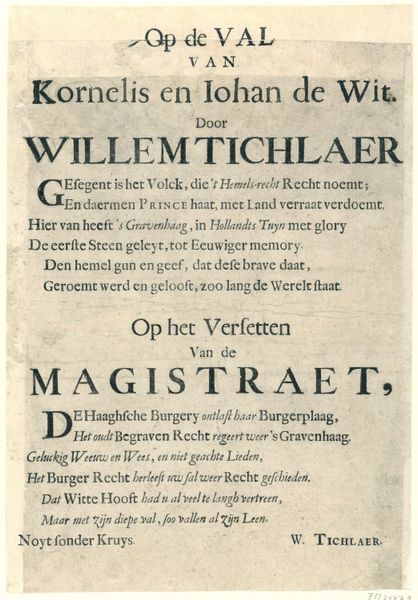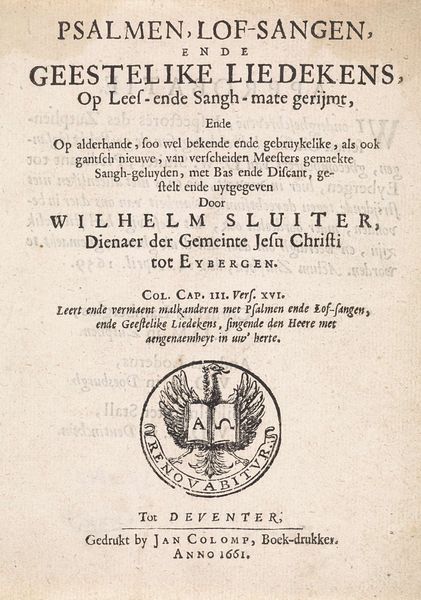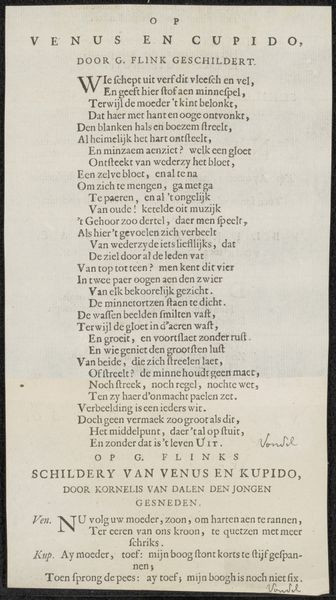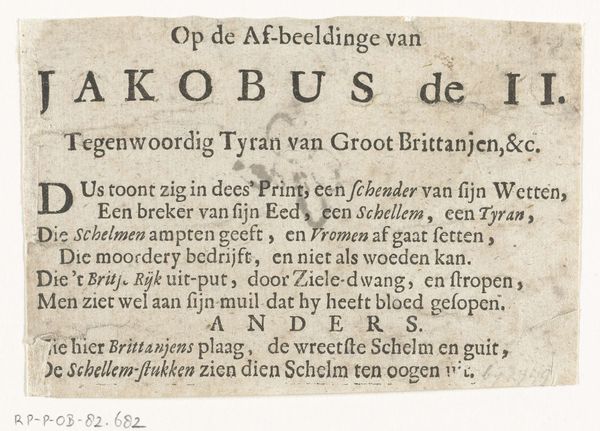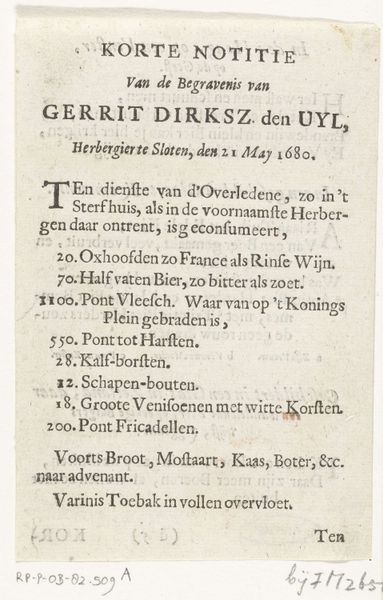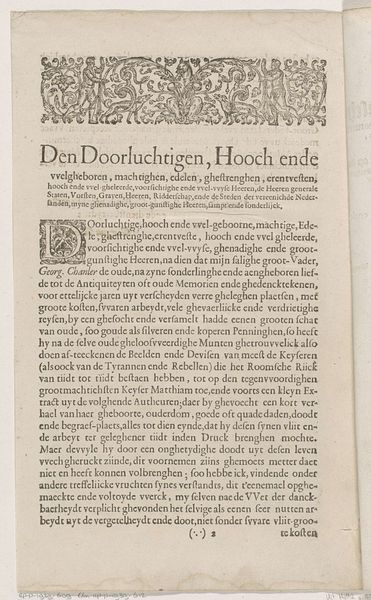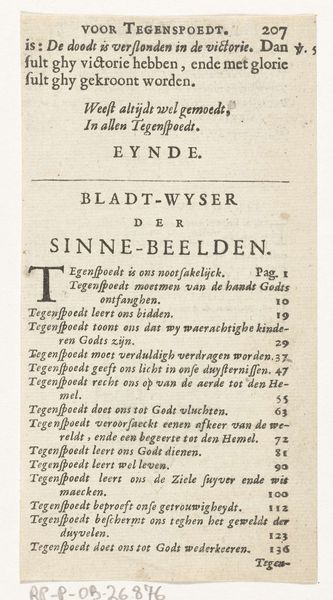
print, paper, typography
#
type repetition
#
aged paper
#
script typography
#
hand-lettering
#
dutch-golden-age
# print
#
hand drawn type
#
paper
#
text
#
typography
#
hand-drawn typeface
#
stylized text
#
thick font
#
handwritten font
#
columned text
Copyright: Rijks Museum: Open Domain
This is Joost van den Vondel's elegy for Govert Flinck, likely produced shortly after the painter’s death in Amsterdam in 1660. The print presents us with a visual and textual memorial to the artist. Vondel’s poem reflects the cultural values of the Dutch Golden Age, where art and artists held a prominent place in society. Note how it emphasizes Flinck's skill as a painter – "kunstrijken" meaning skillful, or artistic – and how his work was seen to give life to nature itself. The poem suggests that Flinck’s art defies death, implying art's power to transcend mortality, a common theme in memorial art from the period. This was a society that had made a lot of money and the Dutch masters were in demand as interior decoration for the wealthy merchant's canal houses. To fully understand this piece, we would want to research the relationship between Vondel and Flinck, as well as examine other elegies and memorial prints from the period. These resources can help us understand the social role and function of art in 17th-century Dutch society.
Comments
No comments
Be the first to comment and join the conversation on the ultimate creative platform.
